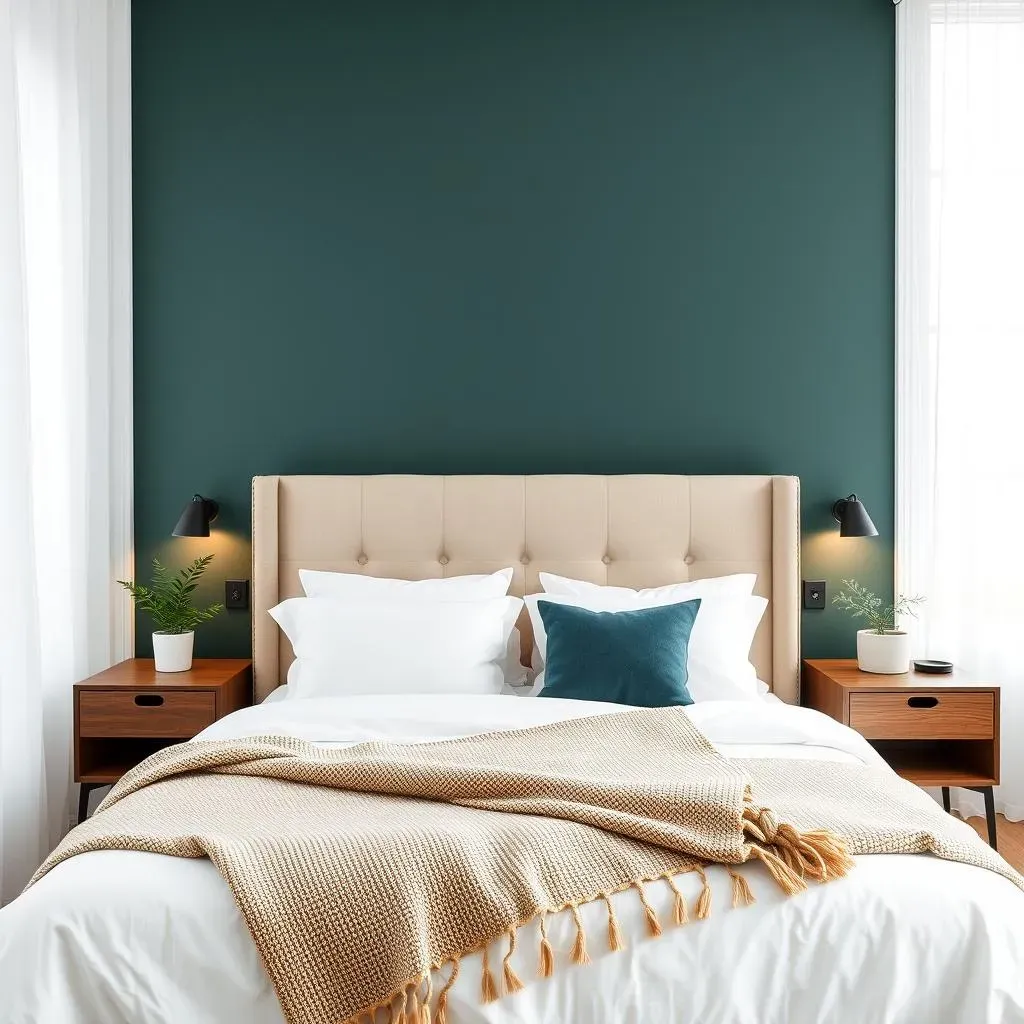Table of Contents
Ready to give your master bedroom a serious style upgrade? Forget boring, plain walls! We're diving into the exciting world of master bedroom accent wall paint ideas that will transform your space from drab to fab. An accent wall isn't just about slapping on a different color; it's about creating a focal point, adding personality, and setting the mood for your personal sanctuary. This article is your go-to guide, whether you're dreaming of a bold, dramatic statement or a subtle, calming effect. We'll explore how to select the perfect paint color, play with patterns and techniques, and even give you some DIY tips to make the process fun and easy. Get ready to unleash your inner designer and create a master bedroom you'll absolutely love. So grab your paintbrushes, and let's get started!
Choosing the Right Paint Color for Your Master Bedroom Accent Wall
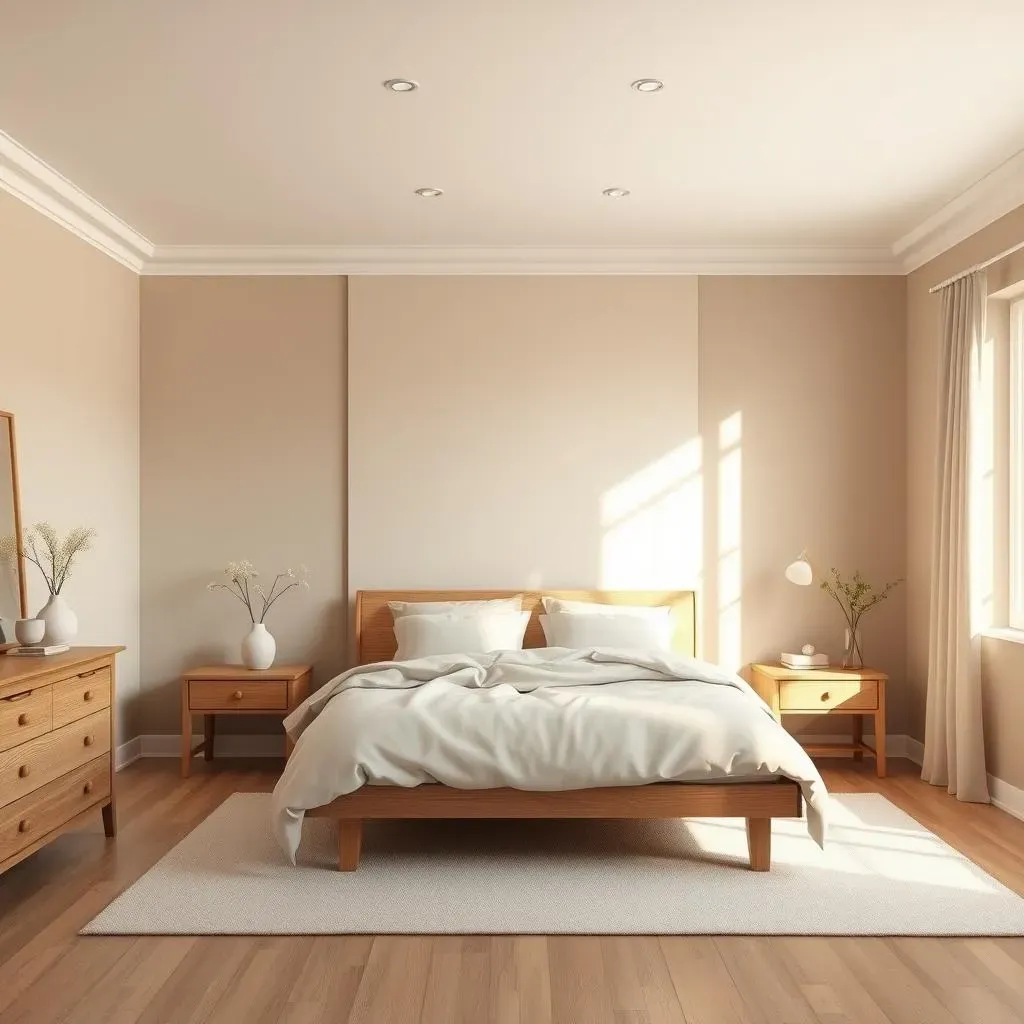
Choosing the Right Paint Color for Your Master Bedroom Accent Wall
Understanding the Impact of Color
Okay, so you're thinking about a master bedroom accent wall, fantastic! But before you grab just any can of paint, let's talk color psychology. Colors aren't just pretty; they can seriously affect your mood. Think about it: a bright, sunny yellow might make you feel energetic, while a deep, calming blue can help you unwind. For a bedroom, where you want to feel relaxed and peaceful, you might want to avoid super vibrant hues that could keep you up at night. Instead, consider softer tones or deeper shades that create a sense of tranquility. It’s like choosing the right music for a chill night versus a party—you want the color to set the right vibe.
Also, don't forget about the existing colors in your room. The furniture, bedding, and other decor will all play a role. You want your accent wall to complement these elements, not clash with them. It's like putting together an outfit; you wouldn't wear a polka dot shirt with striped pants, would you? The same principle applies to your room's color scheme. You want a cohesive look that feels intentional and not like a color explosion.
Considering Your Room's Lighting
Here's a secret that many people miss: the way light hits your accent wall can change everything. Natural light, especially, can make a paint color look totally different than it does in the store or online. So, before you commit to a specific shade, test it out in your room, preferably on a small area of the wall, and see how it looks at different times of the day. What looks amazing at noon might appear dull and lifeless in the evening. It's like trying on clothes under different lights – what looks good in the dressing room might look completely different at home.
Artificial lighting also matters. Warm white bulbs will bring out yellow tones, while cool white bulbs can make colors appear more crisp and clean. Consider the type of light you use most often in your bedroom and how that will affect your chosen paint color. Remember, the goal is to create a space you love, and that includes how the colors interact with the light in your room. It's all about creating harmony and a visually pleasing space.
Light Type | Color Effect |
|---|---|
Natural Light | Can reveal true undertones, changes throughout the day. |
Warm White | Brings out yellow and warm tones, can make colors feel cozy. |
Cool White | Makes colors appear crisp, clean and can make blues and grays appear more intense. |
Finding Your Personal Style
Ultimately, the best color for your master bedroom accent wall is the one that you love the most. Don't get too caught up in trends or what other people are doing. This is your space, and it should reflect your personality and taste. If you love bold colors, go for it! If you prefer a more neutral palette, that's great too. The key is to choose a color that makes you feel good and that you'll enjoy seeing every day. It's your personal haven, make it truly yours.
Don't be afraid to experiment with different shades and combinations. Get some paint samples and try them out on your wall. This will give you a better sense of how the colors will look in your space. And remember, it's just paint. If you don't like it, you can always change it! The most important thing is to have fun and create a master bedroom that is uniquely you. So go ahead, be bold, be creative, and make your master bedroom a space that you truly cherish.
Master Bedroom Accent Wall Paint Ideas: Patterns and Techniques
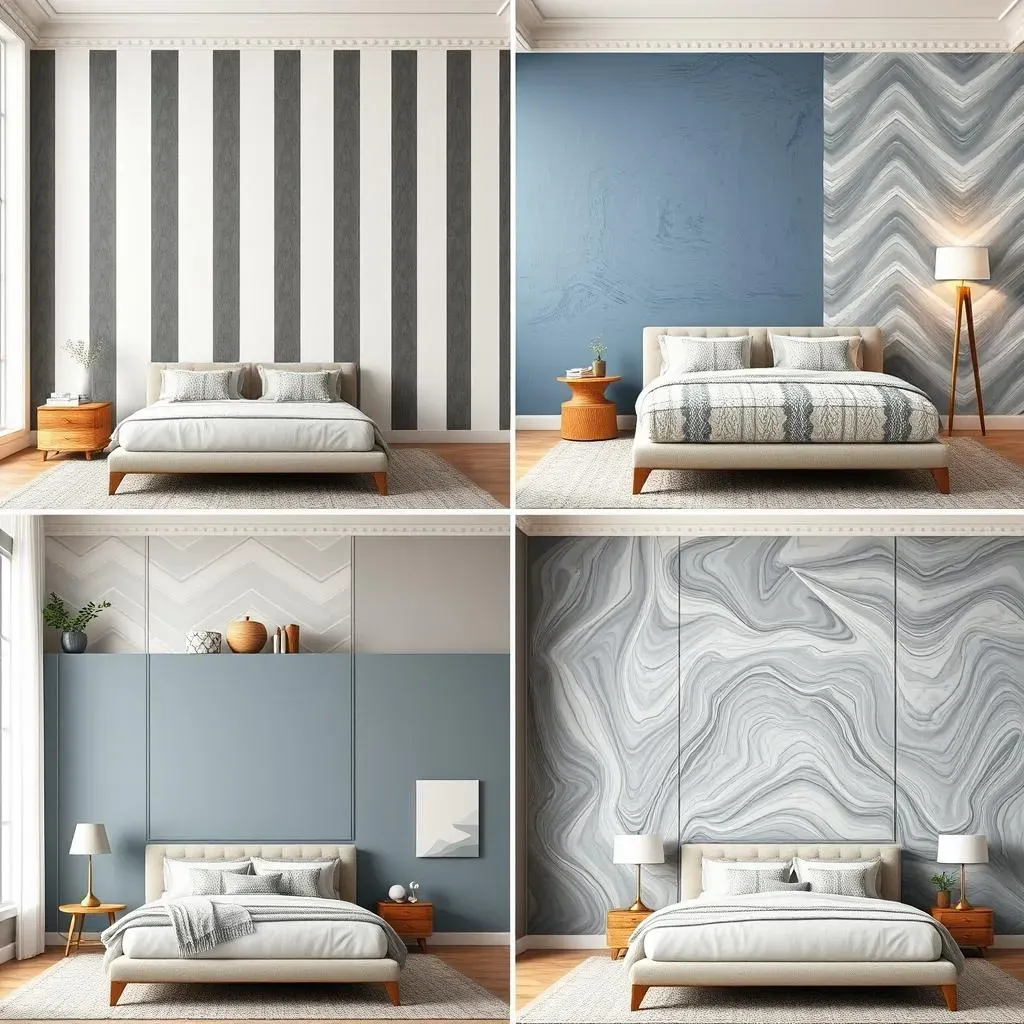
Master Bedroom Accent Wall Paint Ideas: Patterns and Techniques
Geometric Patterns
Okay, so you've got your color picked out, but why stop there? Let's add some pizzazz with geometric patterns! Think stripes, chevrons, or even bold triangles. These aren't just trendy; they’re a fantastic way to add visual interest and a modern touch to your master bedroom. Imagine a wall with crisp, clean stripes in contrasting colors – it's like a stylish hug for your room. You don't need to be a professional painter to achieve this, either. With some painter's tape and a little patience, you can create stunning geometric designs that look like they came straight out of a magazine.
And here’s the cool part: you can customize the pattern to fit your style. Go for thin, delicate lines for a subtle effect or wide, bold stripes for a more dramatic statement. You can even create a more intricate pattern, like a geometric mural, if you're feeling adventurous. The key is to plan it out beforehand and take your time with the taping process. A little precision goes a long way in creating a flawless geometric design. It's like drawing with paint, and the possibilities are endless.
Textured Paint Techniques
Let's talk texture! It's not all about smooth, flat surfaces. Adding texture to your accent wall can bring a whole new level of depth and dimension to your master bedroom. Think about it: a wall with a subtle faux finish or a slightly rough texture can add so much character. Techniques like sponging, rag rolling, or stippling can create a unique, almost artistic look. It’s like giving your wall a personality of its own, making it more than just a flat surface.
These textured techniques are not as intimidating as they might sound. With the right tools and a bit of practice, you can achieve professional-looking results. And the best part? They can hide imperfections in your walls, giving them a more polished look. It's like a secret weapon for a flawless finish. You can even use textured paint to mimic the look of natural materials, like stone or plaster, adding a rustic or earthy vibe to your master bedroom. The possibilities are vast, and the results can be breathtaking.
Technique | Description | Effect |
|---|---|---|
Sponging | Applying paint with a sponge. | Creates a mottled, textured look. |
Rag Rolling | Rolling a rag over wet paint. | Produces a soft, layered texture. |
Stippling | Dabbing paint with a brush. | Adds a subtle, dotted texture. |
Ombre and Color Wash
If you're looking for something a little more subtle but still eye-catching, consider an ombre or color wash effect. Ombre is like a gentle gradient, where one color gradually fades into another, creating a soft and dreamy look. Color washing involves applying thin layers of diluted paint to create a hazy, watercolor-like effect. It's like painting with clouds, adding a sense of tranquility and calm to your master bedroom. These techniques are perfect for creating a serene and inviting atmosphere.
These techniques might seem a bit advanced, but they're actually quite easy to achieve with a little practice. The key is to blend the colors seamlessly, creating a smooth transition between shades. You can go for a monochromatic ombre, using different shades of the same color, or you can experiment with contrasting hues for a more dramatic effect. The result is a wall that looks like a piece of art, adding a touch of sophistication and elegance to your space. It's like giving your room a gentle, peaceful embrace.
Creating a Mood with Master Bedroom Accent Wall Paint
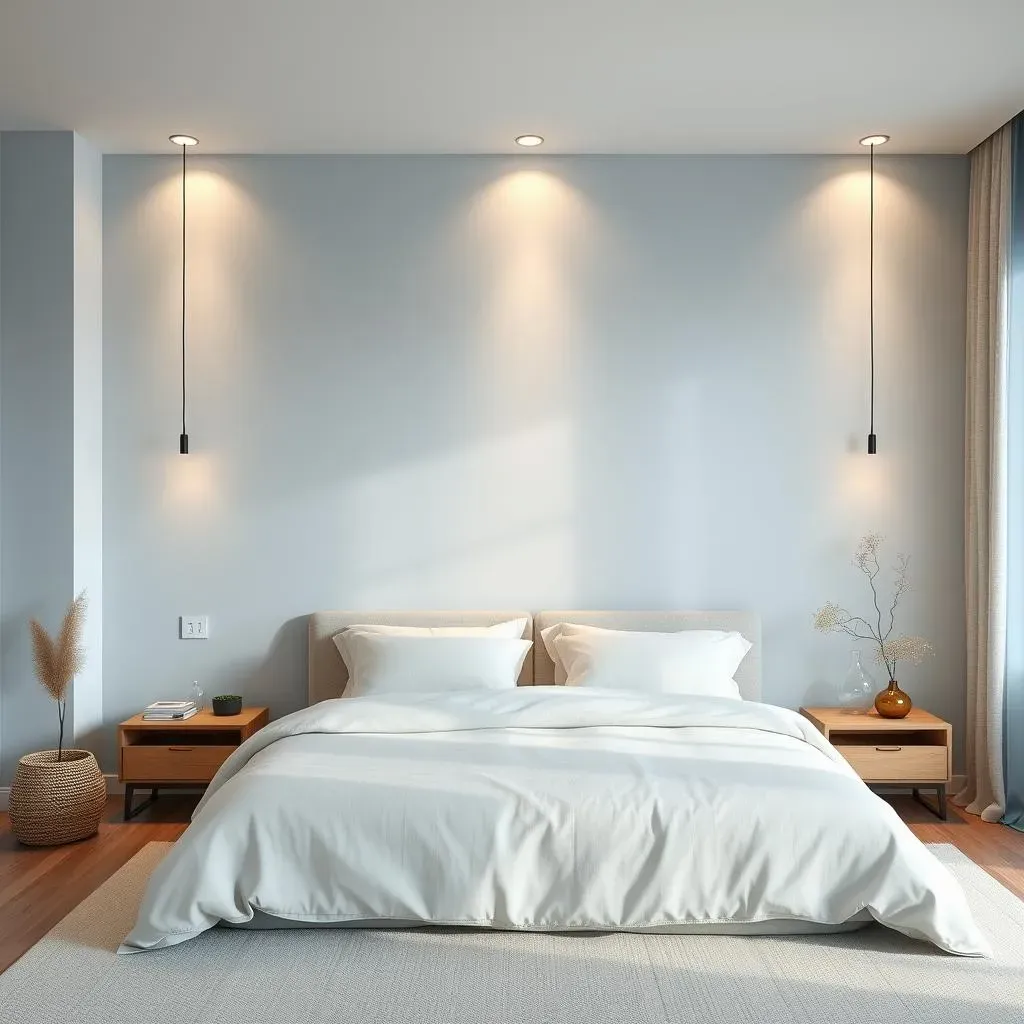
Creating a Mood with Master Bedroom Accent Wall Paint
Setting a Relaxing Ambiance
Alright, let's talk about creating a mood, because that’s what a master bedroom should be all about, right? Think about how you want to feel when you walk into your bedroom. Do you want to feel like you're entering a serene spa, or a cozy, warm retreat? The colors you choose for your accent wall can make a huge difference. Soft, muted colors like light blues, greens, and grays can create a calming and relaxing atmosphere. It’s like wrapping yourself in a gentle hug, helping you unwind after a long day. These colors are like a visual lullaby, soothing your mind and preparing you for a good night's sleep. It’s not just about making the room look nice; it’s about making it feel right.
If you're aiming for a space that promotes rest and relaxation, steer clear of overly bright or stimulating colors. Instead, opt for shades that are easy on the eyes and that create a sense of peace and tranquility. Think about the colors you see in nature – the soft blues of the sky, the calming greens of a forest, or the gentle grays of a cloudy day. These colors can bring a sense of harmony and balance to your bedroom, creating a haven where you can truly recharge. It's all about creating a space that feels like a sanctuary, a place where you can escape the chaos of the outside world. Remember, your bedroom should be your personal retreat.
Creating a Sense of Drama
Now, if you're feeling a bit more daring, let's dial up the drama! A master bedroom doesn’t have to be all soft and gentle. Sometimes, a bold, dramatic accent wall can add a touch of sophistication and intrigue. Deep, rich colors like navy blue, charcoal gray, or even a dark forest green can create a sense of luxury and elegance. It’s like stepping into a stylish, high-end hotel room, adding a touch of glamour to your everyday life. These colors can make a statement without being overwhelming, adding depth and character to your space.
When using darker colors, it’s essential to balance them with lighter elements in the room. Think about adding light-colored bedding, furniture, and decor to create a pleasing contrast. This will prevent the room from feeling too dark or heavy. It's like creating a visual masterpiece, where the dark colors are the backdrop and the lighter colors are the highlights. The key is to use dark colors strategically, making sure they enhance the overall aesthetic of the room. It's all about creating a space that’s both dramatic and inviting, a place where you can feel both energized and relaxed.
Mood | Color Palette | Effect |
|---|---|---|
Relaxing | Light blues, greens, grays | Creates a calming and peaceful ambiance. |
Dramatic | Navy blue, charcoal gray, deep greens | Adds a touch of sophistication and luxury. |
Cozy | Warm browns, terracotta, beige | Makes the room feel inviting and comfortable. |
Adding Warmth and Coziness
If you’re after a cozy, inviting vibe, think about using warm colors like browns, beiges, and terracotta. These colors can make your master bedroom feel like a warm hug, creating a comfortable and welcoming atmosphere. It’s like stepping into a rustic cabin or a cozy farmhouse, where you feel instantly at home. These colors can make the room feel intimate and inviting, perfect for curling up with a good book or enjoying a relaxing evening. They create a sense of warmth and comfort that makes you want to stay in and unwind.
Don’t be afraid to play with different shades and tones within the warm color family. You can mix different browns, from light tans to rich chocolates, to add depth and dimension to your accent wall. Consider adding textured elements like wooden accents or cozy textiles to enhance the warmth and comfort of the space. It's like creating a layered masterpiece, where each element adds to the overall feeling of coziness. The goal is to create a master bedroom that feels like a sanctuary, a place where you can truly relax and recharge. Remember, your bedroom should be your happy place.
DIY Master Bedroom Accent Wall Paint: Tips and Tricks
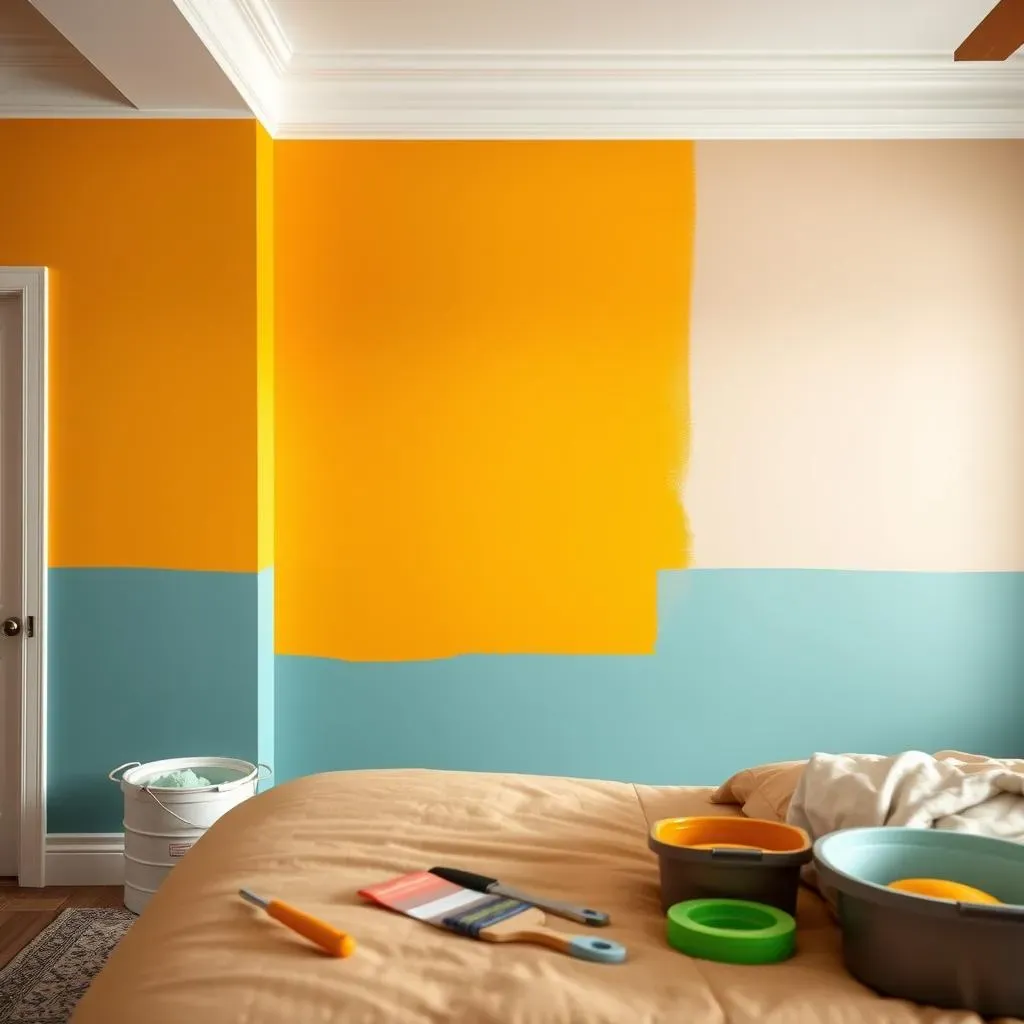
DIY Master Bedroom Accent Wall Paint: Tips and Tricks
Gathering Your Supplies
Alright, let's get down to the nitty-gritty. You're ready to tackle that accent wall yourself, which is awesome! But before you start slinging paint around, let's make sure you've got all your ducks in a row. First things first, you'll need your paint, of course. Choose a good quality paint; it'll make a big difference in how it looks and how long it lasts. Then, grab some painter's tape – the blue stuff is your best friend for crisp lines. You'll also need a paint roller, a brush for those tricky corners, and a paint tray. Don't forget drop cloths to protect your floor and furniture. It's like prepping for a cooking show; you want all your ingredients ready before you start mixing.
And here's a pro tip: don't skimp on the prep work. It's like building a house; the foundation is key. Make sure your wall is clean and smooth before you start painting. Fill any holes or cracks, and give it a light sanding if needed. This will help the paint adhere better and give you a flawless finish. It might seem like extra work, but trust me, it's worth it. It's like making sure your canvas is perfect before you start painting a masterpiece. And remember, patience is your secret weapon. Rushing through the process can lead to mistakes, and we're aiming for perfection here!
Step-by-Step Painting Guide
Okay, so you've got your supplies, your wall is prepped, and you're feeling ready to go. Let's break down the painting process into easy steps. First, apply your painter's tape along the edges of your accent wall, making sure it's nice and straight. This will create those crisp, clean lines we talked about. Then, pour your paint into the tray, and load up your roller. Don't overload it, though, you want to avoid drips. Start painting in smooth, even strokes, working from top to bottom. It's like writing a beautiful cursive letter; you want consistent, fluid movements.
For those tricky corners and edges, use your paintbrush. Take your time and make sure you get good coverage. Once you've finished your first coat, let it dry completely. This is crucial! Don't be tempted to rush into the second coat, or you might end up with a messy finish. It's like waiting for your cake to cool before you frost it; it needs that time to set. Once the first coat is dry, apply a second coat, following the same steps. After the second coat is dry, carefully remove the painter's tape. And there you have it, a perfectly painted accent wall! It’s like watching your hard work pay off, and it feels amazing.
Step | Action |
|---|---|
1 | Apply painter's tape to edges. |
2 | Load roller with paint, avoid drips. |
3 | Paint in smooth, even strokes from top to bottom. |
4 | Use brush for corners and edges. |
5 | Let first coat dry completely. |
6 | Apply second coat. |
7 | Carefully remove painter's tape. |
Troubleshooting Tips
Even the best DIY projects can have a few hiccups, so let's talk about some common problems and how to fix them. If you notice that your paint is dripping or running, it's usually because you've loaded too much paint on your roller or brush. Try using less paint and applying it in thinner coats. If you see streaks in your paint, it could be that you're not applying enough paint, or that you're not using enough pressure on your roller. Experiment with your technique until you get it just right. It's like finding the perfect recipe; it might take a few tries to get it perfect.
Another common issue is paint bleeding under the painter's tape. To avoid this, make sure your tape is firmly pressed down before you start painting. You can also try sealing the edges of the tape with a thin coat of the base wall color before applying your accent color. This will create a barrier that prevents the paint from seeping underneath. It’s like putting on a protective layer before you go out in the rain. And remember, if things don't go perfectly the first time, don't get discouraged! You can always touch up your paint job or even start over. The most important thing is to learn from your mistakes and keep practicing. It’s all part of the DIY journey.
